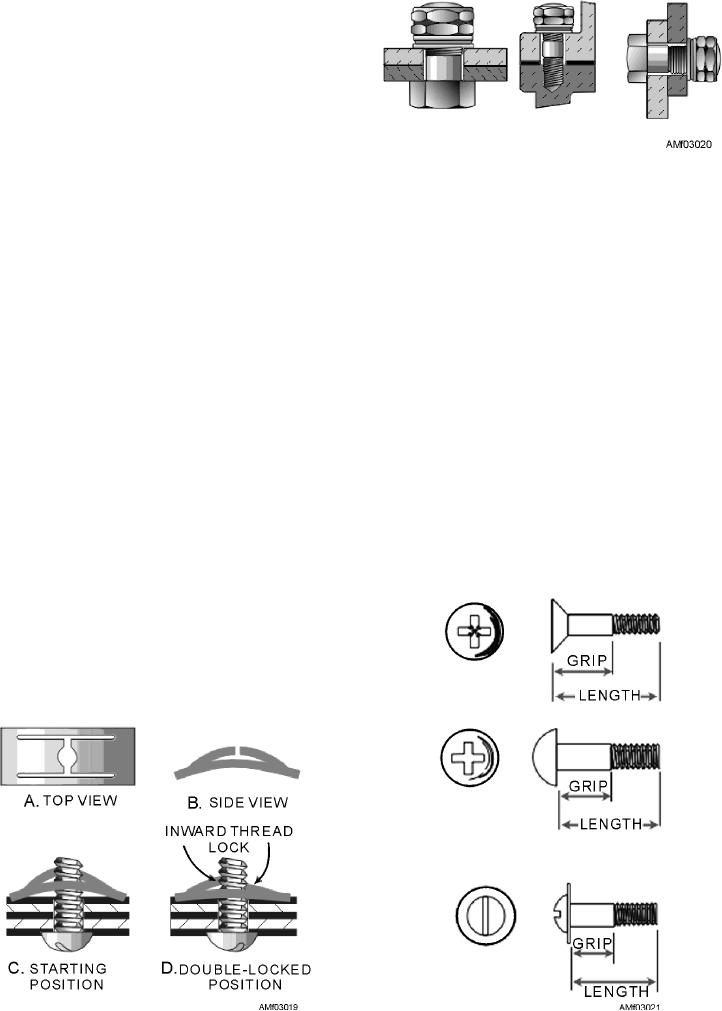
strength is required or where space is limited and the
use of external-wrenching nuts would not permit the
use of conventional wrenches for installation and
removal. This is usually where the bearing surface is
counterbored. These nuts have a nonmetallic insert that
provides the locking action.
POINT WRENCHING NUTS.--These nuts are
generally used where a nut with a high tensile length is
Figure 3-20.--Typical installations of the Klincher locknut.
required. These nuts are installed with a small socket
wrench. They are usually self-locking.
fastened. Notice in figure 3-20 that the end that looks
SHEAR NUTS.--These nuts are designed for use
like a double hexagon is away from the metal being
with devices such as drilled clevis bolts and threaded
fastened.
taper pins that are normally subjected to shearing stress
only. They are usually self-locking.
Screws
SHEET SPRING NUTS.--These nuts are used
with standard and sheet metal self-tapping screws to
The most common threaded fastener used in
support line clamps, conduit clamps, electrical
aircraft construction is the screw. The three most used
equipment, and access doors. The most common types
types are the structural screw, machine screw, and the
are the float, the two-lug anchor, and the one-lug
self-tapping screw.
anchor. The nuts have an arched spring lock that
STRUCTURAL SCREWS.--Structural screws
prevents the screw from working loose. They should be
are used for assembling structural parts. They are made
used only where originally used in the fabrication of the
of alloy steel and are heat treated. Structural screws
aircraft. See figure 3-19.
have a definite grip length and the same shear and
WING NUTS.--These nuts are used where the
tensile strengths as the equivalent size bolt. They differ
desired tightness is obtained by the use of your fingers
from structural bolts only in the type of head. These
and where the assembly is frequently removed.
screws are available in round-head, countersunk-head,
and brazier-head types, either slotted or recessed for the
KLINCHER LOCKNUTS.--Klincher locknuts
various types of screwdrivers. See figure 3-21.
are used to ensure a permanent and vibrationproof,
bolted connection that holds solidly and resists thread
wear. It will withstand extremely high or low
temperatures and exposure to lubricants, weather, and
compounds without impairing the effectiveness of the
locking element. The nut is installed with the end that
looks like a double washer toward the metal being
Figure 3-19.--Sheet spring nut.
Figure 3-21.--Structural screws.
3-11

